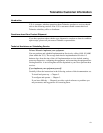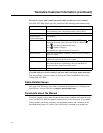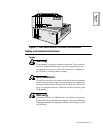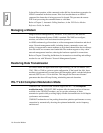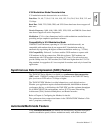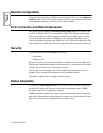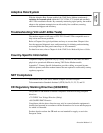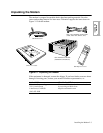
1-6 About the Modem
About the
Modem
In leased line operation, while connected on the dial line, the modem can monitor for
LPDA2 commands in the data stream. If the local modem detects an LPDA2
command, the frame that is being processed is aborted. This prevents the remote
DTE from processing the command frame as valid data.
Refer to Chapter 3, Automatic Calling Interfaces, in the 326X Series Modem
Reference Guide, for details.
Managing a Modem
Integral Network Management by Telenetics’ 9110, 9000-UX, and 9000-PC
Network Management Systems (NMS) is standard. The NMS can configure,
monitor, and control local and remote modem operation.
An NMS continuously polls modems to collect management information and check
status. Network management traffic, including alarms, commands, events, and
polling, is transported to remote modems on an in-band channel that does not disrupt
user data traffic nor consume user bandwidth. The modem supports a daisy-chain
network management interface, reducing the hardware required for connections.
Refer to Chapter 2, Installing the Modem, for instructions on installing and cabling a
modem for use with Telenetics’ Network Management Systems.
Restoring Data Transmission
For critical leased line applications that require backup, you can use Models 3261,
3263, 3266, or 3268 in a point-to-point configuration. If the leased line fails, these
modems can automatically reroute data traffic through the public switched telephone
network (PSTN) over a 2-wire dial line. This integral dial line restoral feature
guarantees that data will keep flowing, minimizing network downtime.
ITU-T V.34 Compliant Modulation Mode
326XFAS T and 326XFA S T-SDC modems support the ITU-T V.34 compliant
modulation mode. 326XFAS T- SDC modems offer the same broad set of features
available in the 326XFA ST modems, and let you take advantage of faster
transmission speeds while providing highly reliable data transmission in full-duplex
synchronous environments.
326XFAS T modems have a line probing feature that optimizes performance on every
connection by automatically choosing the optimum bandwidth, carrier frequency,
and data rate.




